When we look back at copier maintenance history, we’re actually tracking the evolution of modern office culture. From the days of Xerox 914’s debut when technicians lugged toolboxes filled with mechanical parts, to today’s remote diagnostics and sustainability protocols, the journey reflects our changing relationship with technology. The way we’ve maintained these machines tells us something profound about how we’ve adapted to workplace innovation. What might these shifts reveal about our future?
Expert Highlights
- The 1959 Xerox 914 introduction established the technical profession of xerographic service technicians with specialized knowledge and tools.
- 1980s witnessed a shift from mechanical repairs to electronic diagnostics, extending service intervals by 40%.
- Mid-1990s networked copiers enabled remote diagnostics, transforming maintenance from reactive to proactive approaches.
- Preventative maintenance protocols developed with scheduled visits and tailored consumable replacement schedules.
- Modern maintenance balances operational needs with sustainability through recycling programs and modular repair practices.
The Birth of Xerographic Service: Specialist Technicians in the 1960s-70s
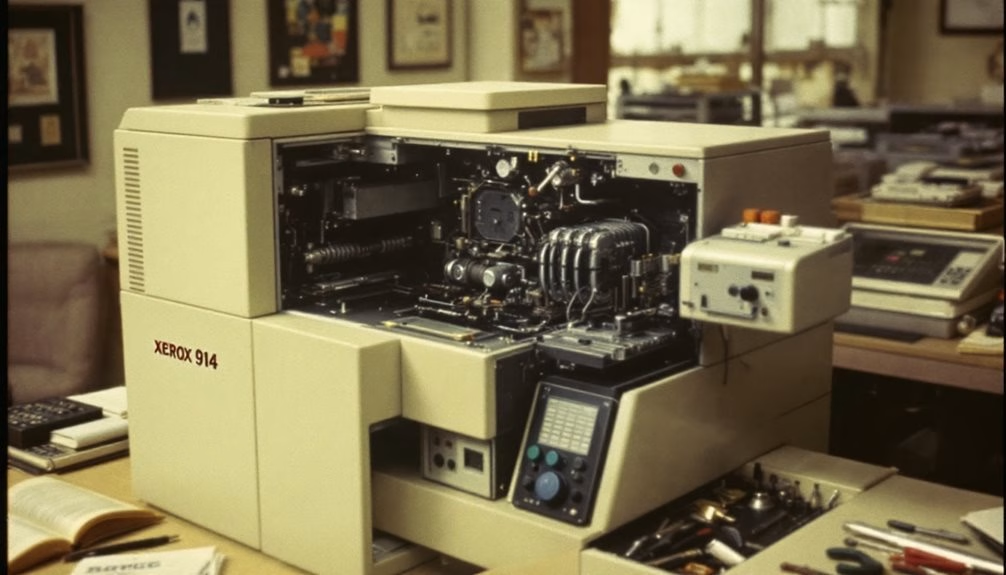
When Xerox introduced the revolutionary 914 copier in 1959, few could have predicted how dramatically it would transform office work and create an entirely new field of technical expertise.
We’ve come a long way since those early days when xerographic service was born. The first generation of copier technicians weren’t just repairmen—they were specialists in a cutting-edge technology.
They mastered complex systems of selenium drums, corona wires, and fuser assemblies. These pioneers developed the diagnostic approaches we still use today.
Many of us remember when a service call meant a well-dressed Xerox tech arriving with specialized tools and knowledge only available through the manufacturer’s training program.
Today’s technicians still provide this expertise, focusing on repair processes that include comprehensive diagnostics and transparent quotes before beginning any work.
From Mechanical to Electronic: Maintenance Shifts of the 1980s
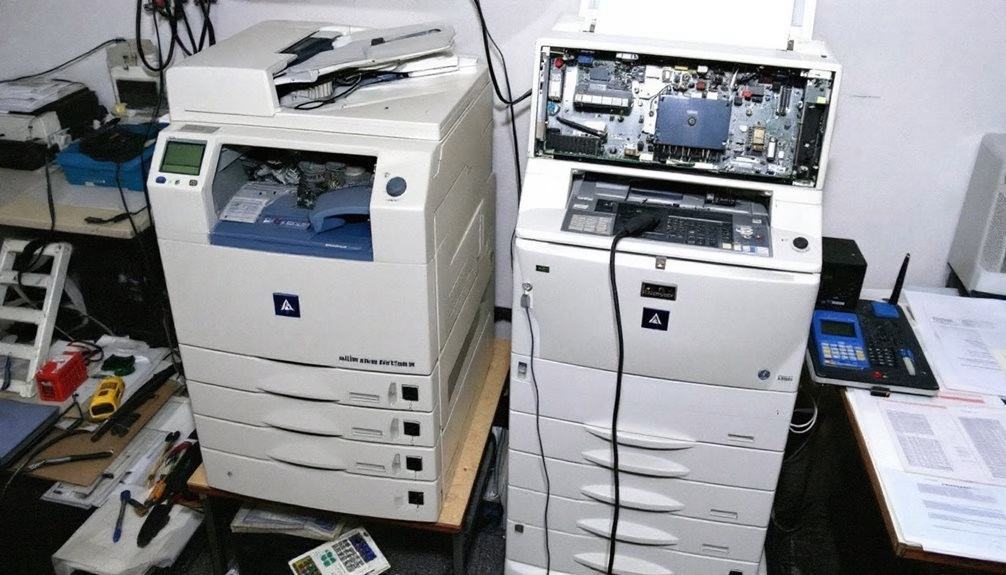
As the digital revolution swept through offices in the 1980s, copier maintenance underwent a fundamental transformation from purely mechanical repairs to increasingly electronic diagnostics.
We witnessed technicians trading their wrenches for diagnostic computers and circuit testers. Our familiar mechanical troubleshooting gave way to digital error codes and modular components.
We’re all part of this remarkable shift where copier service became less about fixing gears and more about swapping boards.
From 1982-1989, we saw service intervals extend by 40% while machine downtime decreased dramatically.
Together, we adapted to these changes that forever altered how we maintain our essential office equipment. Today’s maintenance services rely on factory-trained technicians to perform preventive maintenance that keeps modern digital equipment running efficiently.
The Networked Era: Remote Diagnostics and Digital Troubleshooting
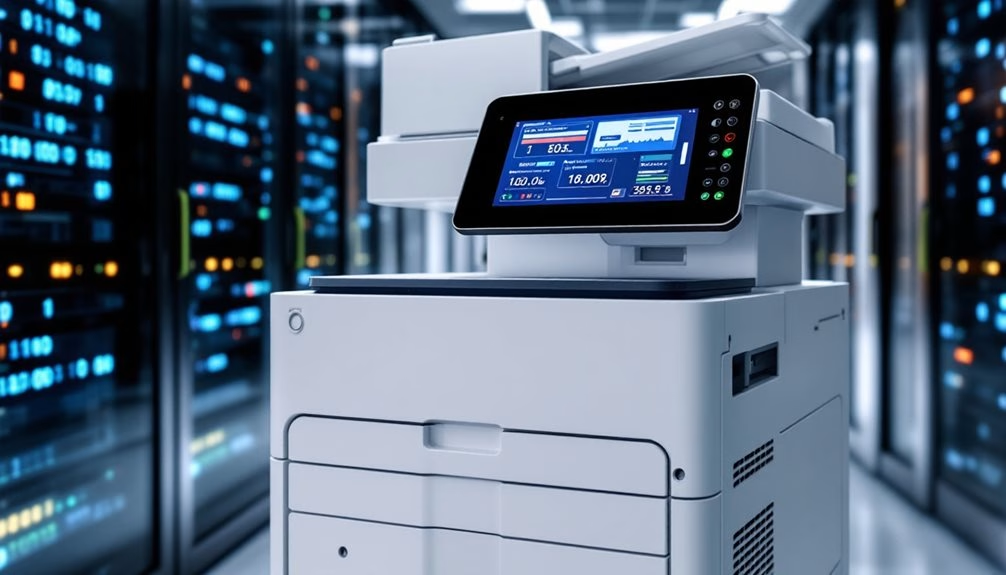
The networked era arrived with revolutionary force in the mid-1990s, transforming how we approach copier maintenance and diagnostics.
We’ve moved from reactive to proactive solutions, with machines that communicate their needs before catastrophic failures occur.
Remember when we’d wait for a breakdown to call technicians? Now, we’re part of a connected maintenance community. Our networked copiers transmit error codes, usage metrics, and component status directly to service centers.
We’ve embraced digital troubleshooting tools that diagnose issues remotely, often resolving problems without on-site visits.
This connectivity hasn’t just saved time—it’s strengthened our relationship with these essential office partners.
Modern Managed Print Services deliver 24/7 monitoring and promise response times of 4 hours for service issues, virtually eliminating extended downtime periods.
Preventative Maintenance Protocols and the Rise of Service Contracts
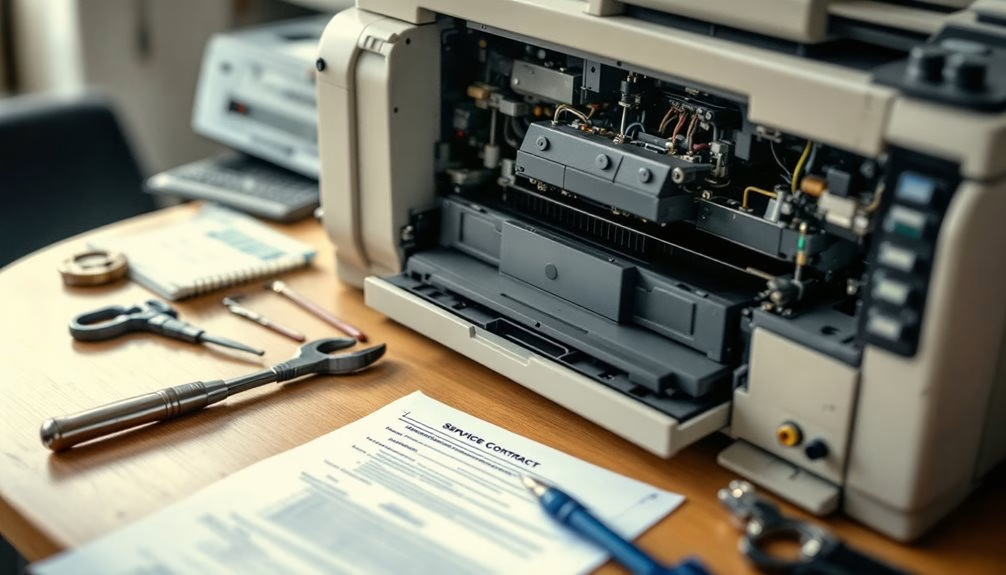
Building on our networked maintenance capabilities, preventative maintenance protocols have transformed from occasional servicing into systematic, scheduled interventions.
We’ve collectively embraced service contracts that prioritize preventing problems rather than just fixing breakdowns.
- Quarterly PM visits now catch issues before they impact your team’s productivity
- Consumable replacement schedules align with your usage patterns, not arbitrary timelines
- Remote diagnostics let’s partner with you between physical visits
Together, we’ve shifted from reactive maintenance to proactive partnerships.
These service agreements offer budget predictability while extending equipment life—a win-win approach we’ve adopted across our industry.
Our commitment to customer satisfaction is reinforced by certified technicians who respond within 4 hours to ensure optimal equipment performance.
Sustainability and Modern Maintenance: Balancing Repair, Replacement, and Environmental Impact
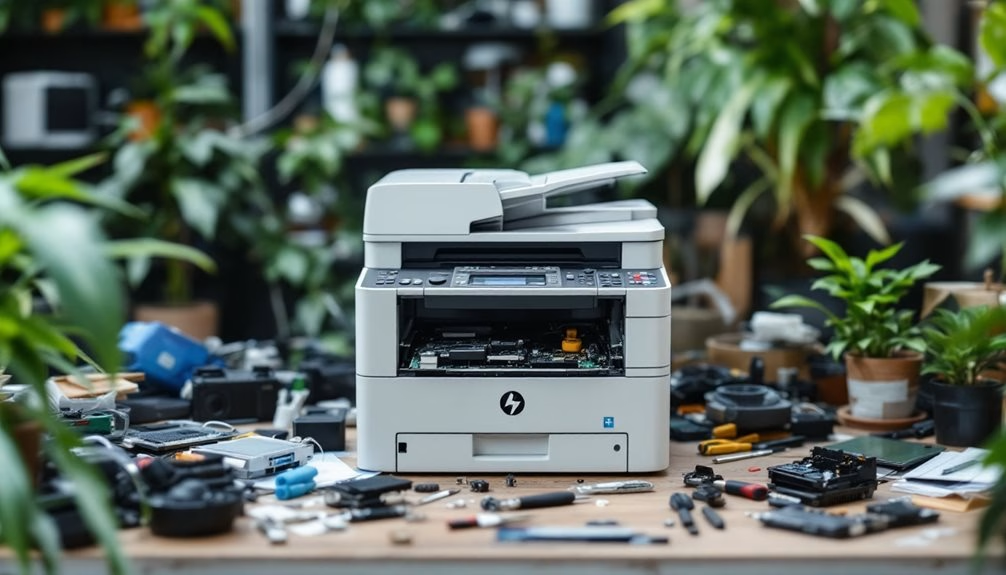
While considering modern copier maintenance, we’ve reached a critical intersection where repair decisions impact both operational costs and environmental footprints.
We’re now balancing traditional repair practices against the environmental consequences of premature replacement.
Today’s sustainability-focused maintenance incorporates recycling programs, energy-efficient upgrades, and extended machine lifecycles.
We’re redefining best practices to include toner cartridge recycling, power management, and modular repairs that prevent whole-unit disposal.
Our collective choices matter.
When we prioritize repairable designs and component-level fixes, we’re not just saving money—we’re participating in a broader movement toward responsible resource management that connects our workplace decisions to global sustainability efforts.
This commitment to sustainability aligns well with the growing trend toward equipment leasing as it facilitates regular technology upgrades while ensuring proper disposal of outdated equipment.
Frequently Asked Questions
How Did Technician Training Programs Evolve Throughout Copier Maintenance History?
We’ve seen copier technician training evolve from informal apprenticeships to structured programs incorporating digital learning, certification requirements, and specialized skills focused on both mechanical and electronic troubleshooting techniques.
What Were Typical Service Call Response Times Across Different Decades?
We’ve seen service call response times evolve dramatically: 1-2 days in the 1960s, 24 hours by the 1980s, 4-8 hours in the 1990s, and now we’re enjoying 2-4 hour windows.
How Did User-Serviceable Components Change the Maintenance Landscape?
User-serviceable components revolutionized our maintenance world. We’ve seen toner, paper, and simple parts become DIY fixes, reducing our dependence on technicians and creating a shared copier maintenance culture among us.
What Role Did Independent Service Organizations Play Against Manufacturer-Provided Maintenance?
Independent service organizations challenged manufacturers’ monopolies by offering lower-cost alternatives, driving competition, and providing us with more maintenance choices when equipment warranties expired. We’ve benefited from their market presence.
How Did Maintenance Costs Compare to Machine Purchase Prices Historically?
We’ve seen maintenance costs typically range from 10-15% of purchase price annually. Over a copier’s lifetime, we’d often spend more on maintenance than the original machine itself.
Expert Final Thoughts
We’ve seen copier maintenance evolve dramatically from simple mechanical fixes to today’s sophisticated remote diagnostics and sustainability practices. As we’ve embraced digital technology, we’ve transformed how we maintain these essential office tools. We’re now balancing cost-effective service contracts with environmental responsibility, ensuring that our approach extends equipment life while reducing ecological impact. The journey continues as we adapt to ever-changing technological demands.
About the Expert
Rafael M.
CEO of JR Copier
With over 35 years of hands-on experience in the copier and office printer industry, Rafael brings unparalleled expertise to every client interaction. His journey from service technician to CEO provides him with comprehensive understanding of all aspects of the business.
Areas of Expertise: Copier and printer sales, equipment leasing strategies, maintenance solutions, and managed print services. Rafael's deep industry knowledge ensures clients receive expert guidance, transparent pricing, and exceptional service for all their office equipment needs.
Connect on LinkedIn